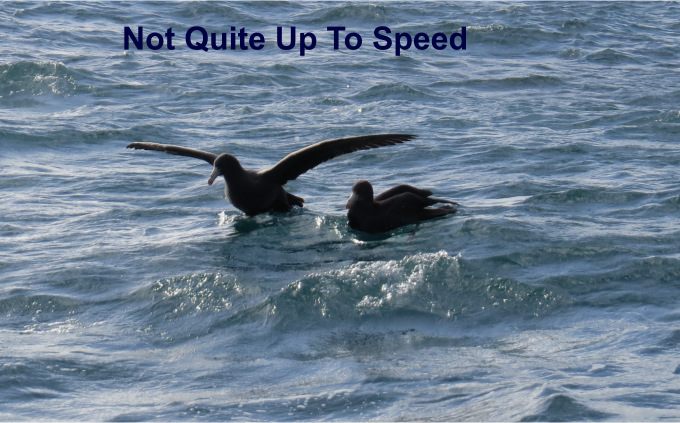Mandurah VMRS - Seabird Rescuers
/Sunday morning, the weather bureau was predicting light winds, partly cloudy skies and 4-6 foot (1.5m-2m) waves offshore. I was scheduled to join the Volunteer Marine Rescue Service (VMRS) boat at 0830 as an observer as they went a few miles offshore to release some rehabilitated seabirds, and conditions looked good.
I arrived a few minutes early and introduced myself to the captain, John Blay, and the VMRS Public Relations Officer, Ray Rudland. John has been with the VMRS for 28+ years while Ray was a newbie with only 10 years under his belt. Ray showed me around the 43' (13m) search and rescue vessel, Spirit of Mandurah, while the crew and captain prepped the boat and did the pre-departure checks.
A few minutes later, four members of the Western Australian Seabird Rescue (WASR) group arrived with the birds. This organization was started in 2003 and since then has rescued thousands of birds. This past year alone, they were able to rescue 460 birds. The majority of birds they help are shore- based seabirds like gulls, terns, cormorants and pelicans that have had bad encounters with fishing gear. Often, these birds can be unhooked or untangled from the fishing tackle and released. Sometimes, the injuries are more serious, and the bird must be sheltered, fed and treated while it regains its health.
Frequently, migratory seabirds like albatross and giant petrels are washed ashore after a storm. It seems to happen more often to the younger, more inexperienced birds. These guys are weak, dehydrated and disoriented, and unless they receive help, they will most likely die. The WASR volunteers capture and attempt to rehabilitate these birds. Each bird is temporarily adopted while it is fed and re-hydrated. Several of the volunteers have constructed habitats at their homes to shelter the birds, including one aviary that is 45 feet (14m) in diameter and has a pool and two sandy 'beaches'. Some types of birds thrive on chicken carcasses while others must be force fed small fish and squid several times daily. These dedicated volunteers devote a lot of time rehabilitating each bird. If and when one of these migratory birds regains its strength, it is taken offshore and released.
Today, we would be heading 5-10 nm offshore to release three giant petrels and a sooty shearwater. Each bird was carried aboard in its own carrier and stowed on the aft deck. None of the birds looked all that enthusiastic about taking a boat ride.
Everyone was required to don a PFD and a small radio beacon in the event any of us fell overboard. Once the crew had instructed us on safety precautions and the method of inflating our PFD's, we were ready to cast off. Within a few minutes, we were heading out of the estuary and into the Indian Ocean.
The ride was a little lumpy, but not all that bad. We went about 5nm offshore, then John stopped the boat and each bird was released. The shearwater sat on the surface for a minute or two, then began flying – to the applause of all the volunteers. The giant petrels paddled around, dipping their heads into the water and preening.
Large seabirds like albatross and giant petrels are truly wonderful to see when they are flying. We have watched them for hours – days in fact - as they glide over the water with their wingtips only millimeters above the waves. The giant petrels are very large birds with a wingspan of almost 7 feet (210cm), yet they appear to expend almost no effort as they fly. Taking off is a different matter. They beat their huge wings furiously and run along the surface of the water for 50 feet (15m) or so until they gain enough speed to launch themselves into the air. Our petrels seemed in no hurry to fly anywhere. Occasionally, one would make a half-hearted attempt to take off, but then would settle back in the water. Linda, the senior volunteer, explained that the birds began losing strength after only a few days away from the sea. It might take a day or two before they would fly again. In the meantime, they would continue to preen to restore the oils in their feathers, keep hydrated by continually dipping their heads in the water, and building their strength up. They certainly looked happy enough and everyone was optimistic that they would do fine.
We circled our petrels for almost 15 minutes, then reluctantly headed back to Mandurah.
For more information on these two terrific groups of volunteers, visit their websites at:
http://www.waseabirdrescue.com/index.php
https://www.facebook.com/Mandurahwaterrescue






